Welcome to our guide to Chinese tea culture, types, health benefits, and almost everything. China is known as the hometown of tea, for it has a history of tea drinking and making for over 4700 years. When you think of Chinese tea, you may think of aromatic green tea or mellow black tea. But it is a far richer and more diverse world with a wide variety of teas and distinctive tea ceremonies that continue to captivate tea lovers.
Today, Chinese tea is evolving. Classic teas remain popular, while specialty tea beverages like bubble tea and fruit tea are gaining traction, especially among the younger generations.
Table of Contents
What is Chinese Tea?
The History of Chinese Tea
Top 6 Types of Chinese Tea
Rare and Specialized Varieties of Chinese Tea
Health Benefits of Chinese Tea
Appreciate the Art of Chinese Tea Ceremony
Top Places in China to Enjoy Tea
FAQs about Chinese Tea
What is Chinese Tea?
Chinese tea is a plant in the phylum Angiosperms. China is the country with the earliest and most wild tea trees. Chinese tea culture combines ancient Chinese philosophy and art.
China is the country with the most abundant tea resources. Since ancient times, the Chinese people have been growing tea, picking tea, making tea, and drinking tea. According to the local customs, tea makers use traditional Chinese tea-making techniques such as killing green tea, smothering yellow tea, stacking, withering, making green tea, fermentation, scenting, etc., to develop six kinds of tea including green tea, yellow tea, black tea, white tea, oolong tea, black tea and scented tea.
After the reprocessing of these teas, there are a total of more than 2,000 different flavors of tea for people to drink and thus, different tea customs.
Chinese tea culture has been passed down from generation to generation and has been experienced in the daily life, ceremonies, and festival activities of the Chinese people.
Going back to the beginning, China has either directly or indirectly spread the tea species, tea ceremony, tea custom, tea style, tea cultivation methods, tea processing technology, and tea drinking customs.
How to Say and Write Tea in Chinese?
For Chinese tea enthusiasts, you may not miss learning how to say Tea in Mandarin. It is pronounced "chá" (pinyin), in the second tone, which sounds like "cha" as the first part of the English name " Charlie“. To write tea in Chinese, the character is 茶.
The History of Chinese Tea
We all know there is a long history of tea drinking in China. So when the tea was invented? According to the legend, the discovery and use of tea by the Chinese is said to have begun in the time of Shennong, at least 4,700 years ago. In addition, some people say that it originates from the pre-Qin Dynasty, the Western Han Dynasty, or The Three Kingdoms.
Lu Yu thought that the Shennong era was when tea drinking first started, based on the Shennong Food Classic records. Modern research, however, indicates that the book of Shennong Food was written after the Han Dynasty, hence the idea that tea drinking originated in a primitive ancient culture is merely a myth rather than a historical notion.
According to the Annals of Huayang State · Ba Annals written by Changqu in the Eastern Jin Dynasty, the ancient Ba people living in the south of Shaanxi Province were the earliest people to use and plant tea in China, with a history of at least 3,000 years of tea drinking.
Hao Yixing in the Qing Dynasty believed that tea drinking began at the end of the Eastern Han Dynasty and sprouted in the Western Han Dynasty. In Wang Bao's Tong Yue, there are "cooking tea" and "buying Tea in Wuyang", indicating that Sichuan people began to drink and trade tea in the third year (59 BC) of Emperor Xuan in the Western Han Dynasty. That is to say, tea drinking in China was no later than the first century BC.
China's tea ceremony became popular after the reign of Kaiyuan in the Tang Dynasty, and the court and populace were influenced by tea drinking. Later, Emperor Yongtai's first year saw the completion of the first draft of Lu Yu's Tea Classic, while Emperor Jianzhong's first year saw the completion of the final draft. "Tea Classic" holds that the popularity of tea as a home beverage at the time spread to the people of the east capital, Luoyang, and the western capitals, Chang'an (today’s Xian) and Hubei. At the time, tea was most often consumed in the Shandong area.
During the Song Dynasty, tea drinking gained popularity among common people and was considered one of the "seven things" for daily life.
Top 6 Types of Chinese Tea
Following various processing methods, Chinese tea can be transformed into a wide range of teas, primarily black tea, oolong tea, white tea, yellow tea, and green tea.
Chinese Green Tea (绿茶)
Making technique: Unfermented
Key features: After brewing, the tea, tea soup, and leaf base are all primarily green in color.
Famous green teas in China: West Lake Dragon Well green tea, Dongting Biluochun, Huangshan Maofeng, Xinyang Maojian, Lushan Yunwu, Lu 'an Gua piece, Taiping Houkui
Health benefits: Drinking green tea can reduce fat and weight, avoid cancer, and help smokers lessen nicotine harm.
Green tea is one of the main types of Chinese tea. It is a drink made from the new leaves or buds of the tea tree, which are not fermented and are made by killing, shaping, and drying. Green tea retains the natural green color and nutrients of tea leaves, with a fresh taste and a high antioxidant content.
With the highest output in China, Green tea is the tea with the most abundant varieties and the most famous teas. It is also the most common tea served in Chinese restaurants and tea houses.
Chinese Oolong Tea (乌龙茶)
Making technique: Semi-fermented
Key features: Oolong tea is thick in shape, light and green in color, golden in tea soup, rich and fragrant in aroma, with evident blooms and red rims around the green leaves at the base.
Famous Oolong teas in China: Anxi Tie Guanyin, Wuyi Rock tea, Da Hong Pao, Phoenix Single Bush
Health benefits: Drinking Oolong tea can help regulate blood lipids, lose weight, refresh, maintain beauty, and keep young.
Oolong tea, with many varieties, is a tea category with distinctive Chinese characteristics among several major teas in China. Oolong tea is a kind of tea with excellent quality produced after picking, withering, shaking green, frying green, rolling, and baking.
Oolong tea evolved from the tribute tea dragon group and phoenix cake in the Song Dynasty and was created around 1725 (Yongzheng Reign of Qing Dynasty).
Oolong tea has a distinct flavor and scent, combining the mellowness of black tea with the fragrance of green tea.
Chinese Black Tea / Red Tea (红茶)
Making technique: Fully-fermented
Key features: It is named because of the red color after the brewed tea and the leaf base.
Famous black teas in China: Keemu, Dianhong
Health benefits: Black tea is good for digestion.
Black tea is a fully fermented tea and a chemical reaction centered on enzymatic oxidation of tea polyphenols occurs during its processing. The chemical composition of fresh leaves changed greatly, tea polyphenols were reduced by more than 90%, and new components such as theaflavins and thearubin were produced.
Black tea is the second largest type of Chinese tea, with Keemen Black tea being the most famous.
Chinese Yellow Tea (黄茶)
Making technique: Light-fermented
Key features: Due to the use of special "dull yellow" technology, it has the "yellow soup and yellow leaves".
Famous yellow teas in China: Junshan silver needle, Mengding yellow buds
Health benefits: Yellow tea helps digestion and improves appetite.
Yellow tea is a specialty of China, which is divided into yellow bud tea, yellow small tea, and yellow big tea according to the size of the fresh leaves. With its unique dull yellow technology and fresh and pleasant aroma, it is like a treasure in the mountains.
Chinese White Tea (白茶)
Making technique: Light-fermented
Key features: The surface of the tea leaves is full of white fuzz after only being killed and not kneaded.
Famous white teas in China: White peony, Baihao Yinzhen
Health benefits: White tea has antibacterial, anti-inflammatory, and antioxidant properties.
White tea is a traditional famous tea created by Chinese tea farmers and one of the six major types of Chinese tea. It is a type of tea that is only processed after drying or simmering, not after killing or rolling. For the most part, its tea is made out of pekoe-covered buds that resemble silvery snow, hence the name.
Chinese Dark Tea (黑茶)
Making technique: Post-fermented
Key features: The tea has a black look, a black-brown color, a somewhat strong fragrance, and a more subdued flavor the longer it is stored.
Famous dark teas in China: Pu 'er tea, Liubao tea, Anhua dark tea
Health benefits: Black tea has the effect of helping digestion, resolving greasy, reducing fat, and losing weight.
Dark tea gets its name from the fact that it looks black. One of the six varieties of Chinese tea, black tea is a post-fermented beverage that is mostly produced in Sichuan, Yunnan, Hubei, Hunan, Shaanxi, Anhui, and other regions. The primary raw material for pressing tea, black tea, has a higher level of maturity than traditional black tea.
Rare and Specialized Varieties of Chinese Tea
Pu’erh Tea (普洱茶)
Pu-erh tea is prepared from sun green hair tea from Yunnan large leaf seed tea as raw material and refined by special processing. Pu-er tea is categorized as black tea and is primarily produced in Pu'er City, Lincang City, Xishuangbanna Dai Autonomous Prefecture, and other parts of Yunnan Province.
Jasmine Tea (茉莉花茶)
Green tea and jasmine blossoms are combined to make jasmine tea, which has been around for more than a thousand years and is categorized as both flower tea and green tea.
Originating in India, jasmine tea was brought to China during the Western Han Dynasty via the land and sea Silk Road. It landed in Fuzhou and gave rise to the technique of using jasmine to flavor green tea.
Chinese Herbal Tea (凉茶)
Guided by the philosophy of traditional Chinese medicine and prepared from Chinese herbs as raw materials, herbal tea is a type of unique Chinese tea that the people of Guangdong, Hong Kong, and Macao have created in accordance with the local environment and diet. Herbal tea has the benefit of clearing heat and detoxifying, generating fluid and quenching thirst, removing fire, and dehumidifying.
Bubble Tea (奶茶)
Bubble tea, or milk tea, is a kind of beverage. Milk tea is heavy in calories, sugar, fat, caffeine, and trans fatty acids, even though Chinese tea leaves are used as a tea foundation. According to a study, a bottle of Coke has almost the same amount of sugar as a cup of milk tea.
Health Benefits of Chinese Tea
Generally speaking, Chinese tea has the effects of maintaining beauty, weight loss, digestion, blood sugar control, and cardiovascular health.
Maintain Beauty and Keep Young
Chinese teas, such as black and green tea, are regarded as detox teas because they include flavonoids, vitamin C, and vitamin E, all of which have strong antioxidant properties. A moderate amount of tea drinking can help remove free radicals in the body, improve the skin, and achieve the effect of beauty.
Support for Losing Weight and Burning Fat
Drinking Chinese tea, especially green tea, oolong tea, and Pu-erh tea, is seen by many as an aid to weight loss. So there are many popular slimming and diet teas on the market. But are Chinese slimming teas work? A variety of active ingredients in tea, such as caffeine, catechins, tea polyphenols, etc., do have a certain effect of promoting weight loss.
It is worth noting that although tea has a positive effect on weight loss, it is not a panacea for weight loss. Excessive consumption of caffeinated tea may lead to insomnia, rapid heartbeat, and other adverse effects.
Auxiliary Blood Glucose Control
Tea can improve insulin sensitivity to some extent, help stabilize blood sugar levels, and reduce blood sugar fluctuations. For people with diabetes or high blood sugar, it has a certain positive effect in assisting blood sugar control.
Encourage Cardiovascular Health
Flavonoids, which are abundant in tea, aid in preventing blood vessel hardening and increase the suppleness and toughness of blood vessel walls, lowering the risk of heart disease and high blood pressure. In addition, tea can lower blood cholesterol, control blood lipids, and safeguard heart health.
Appreciate the Art of Chinese Tea Ceremony
Originating in the pre-Qin, Wei, Jin, and Southern and Northern Dynasties, the Chinese tea ceremony is a philosophy of beauty. The term "Chinese tea ceremony" describes the culture of tea tasting, which includes tea art, tea ceremonies, and tea etiquette.
The quintessential example of the Chinese tea ceremony and tea art is the Chaozhou Congou tea ceremony. It is a folk tradition as well as a tea art. The Congou tea from Chaozhou is the source of both the tea brewing ritual in Taiwan, China, and the fried tea ceremonial in Japan.
Chinese Tea Accessories
Among the many different and exquisitely shaped tea sets used in Chinese tea ceremonies are teacups, teapots, tea bowls, tea kettles, tea trays, tea plates, etc.
According to its material, there are porcelain tea sets, purple clay tea sets, wood fish stone tea sets, lacquer tea sets, bamboo tea sets, glass tea sets, etc.
Although there are many different types of porcelain tea sets, the most popular ones among tea enthusiasts are white porcelain tea sets, black porcelain tea sets, and colored porcelain tea sets.
How to Make Chinese Tea
To practice the Chinese tea ceremony, here’s a step guide on how to brew tea in a traditional way.
1. Wash the hands. Bring in the tea and invite the guests to appreciate the tea and tea sets.
2. Pour boiling water into the teapots and teacups, and pour it out quickly to clean the tea set and raise the temperature.
3. Pour the boiling water over the teapot, cover it, add the tea, and then pour the boiling water over the teapot.
4. Group the snifter cup and sample tea cup with the tea holder and put them on the tea tray.
5. Pour the tea soup into a sample tea cup so that everyone can appreciate its color and aroma.
6. Pour the tea soup into a snifter cup. Fill up 70% of the tea. Serve with tea.
7. While listening to classical music, guests sample the tea cup with three fingers and take three slow sips.
Many are wondering, “How long does the Chinese tea ceremony take?” It depends on the type of tea you choose and the way you brew tea. It can take 3 minutes to half an hour.
Top Places in China to Enjoy Tea
Looking for the best places to taste tea and experience tea culture in China? Here we list China's most famous tea destinations. When touring China, you can visit local tea factories that make tea in a traditional way, sample tea at tea houses, pick tea leaves in tea gardens, and purchase the best Chinese teas.
Hangzhou - When talking about tea, one should not miss the Longjing (Dragon Well) tea, the most famous tea in China. In Hangzhou, tea has been grown for over 1200 years. Hangzhou’s Longjing Village features the premium West Lake Dragon Well tea.
Fujian - Fujian is the home of oolong tea and has a tea-drinking history of more than 1,000 years. The tea set and water are most important to Fujian people when they drink tea.
Sichuan - The history of drinking tea in Sichuan originated from the pre-Qin period, over 2000 years. Sichuan tea culture is distinguished by its low table and chair for brewing tea as well as its tea bowl cover. Teahouses in Chengdu, the capital of Sichuan, are renowned for their relaxed tea-drinking traditions, together with Sichuan Opera watching or mahjong playing.
Yunnan - Yunnan has been planting tea for more than 1,700 years. The main varieties are Yunnan red, green tea, Pu 'er tea, pressed tea, and flower tea. You may also experience the tea ceremonies of local ethnic minority people including the "three-course tea" of the Bai nationality in Dali, and the "Dragon and tiger fighting tea" of the Naxi nationality in Lijiang.
FAQs about Chinese Tea
1. What Tea do the Chinese Drink?
The most popular teas among Chinese people include Longjing Tea, Biluochun, Huangshan Maofeng, Junshan Yinneedle, Dahongpao, Tieguanyin, and Pu 'er Tea.
2. What is the Tea Used in Chinese Restaurants?
Green tea, black tea, and oolong tea are frequently used in most Chinese restaurants. One of the most popular varieties of tea is green tea, which is produced in a straightforward manner while maintaining the tea's inherent color and fragrance.
3. Does Chinese Tea Contain Caffeine?
Tea, including herbal tea, usually contains caffeine. Green and dark teas are generally lower in caffeine, while black, oolong, and white teas are higher in caffeine.
4. What’s the Difference between Black, Green, and Oolong Tea?
They are not made in the same way. Oolong tea is semi-fermented, green tea is unfermented, and black tea is fully fermented.
5. How Long Can Chinese Tea Leaves Be Kept?
A: The shelf life of different teas varies. For example, Yunnan's Pu 'er tea and the brick tea of ethnic minorities can have a shelf life of 10 to 20 years. While other teas are still better fresh. Green tea, for instance, may be stored for a year at room temperature.
6. Do Chinese Put Milk or Sugar in Tea?
Chinese people typically don't add sugar or milk to their tea. On the other hand, they use milk and sugar for bubble tea.
7. Where to Buy Chinese Tea?
In the tea production areas, there are many nice tea factories and tea shops, where you can buy the best Chinese teas at a reasonable price, as a souvenir or gift. Of course, you can also buy authentic Chinese tea online.
8. Is Chinese Slimming Tea / Diet Tea Safe?
Drinking tea can aid in weight loss in a healthy way, but specific "weight loss tea" might cause stomach damage and gastrointestinal disorders if consumed in excess over time.
9. Is Chinese Tea Safe During Pregnancy?
Black tea is not recommended for pregnant women due to its caffeine content, which can increase the strain on the heart and kidneys and have an adverse effect on the development of the fetus. Pregnant women can drink green tea in small amounts. Zinc, vitamin C, and other components in green tea have the benefits of enhancing cardiac and renal function, promoting blood circulation, preventing pregnancy edema, and promoting fetal growth and development.
Experience Chinese Tea Culture with Hi Five Trip
Welcome to China to experience the aroma and culture of Chinese tea in person with some of our most popular China tours:
10-Day China Highlights Tour with Panda (Beijing, Xian, Chengdu, Shanghai)
8-Day China Golden Triangle Tour to Beijing, Xian, Shanghai
11-Day Wonders of China Tour (Beijing, Xian, Guilin/Yangshuo, Shanghai)
If you’d like to learn more about Chinese tea culture, don’t hesitate to contact us, and customize an in-depth China tea culture tour for you.


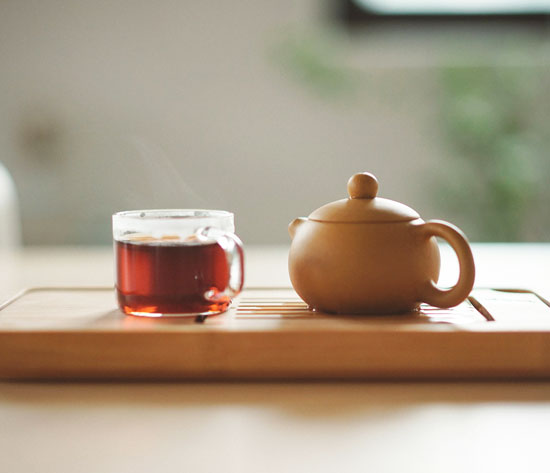
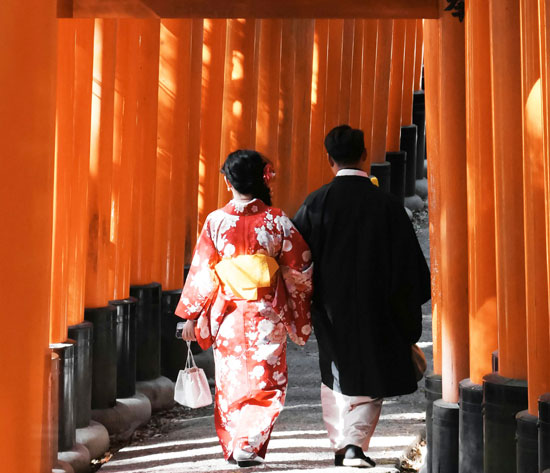
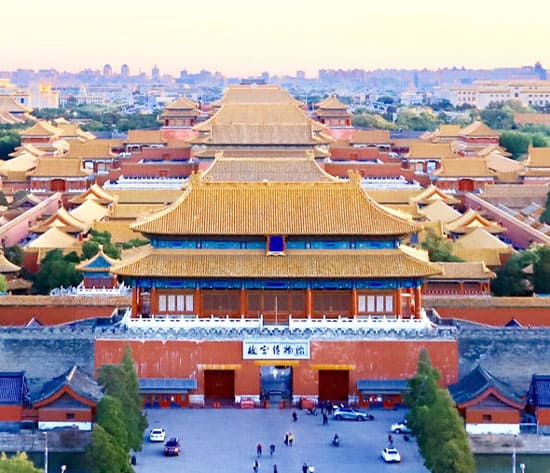
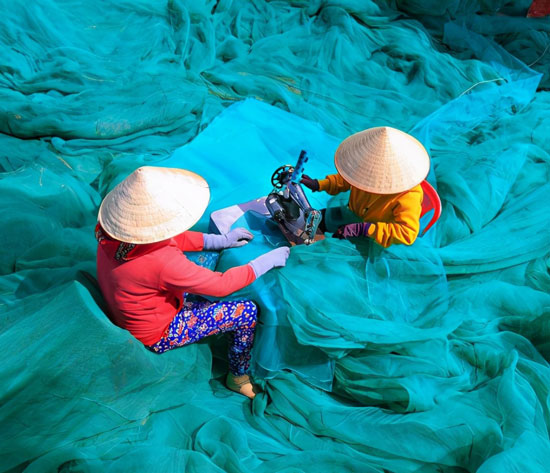
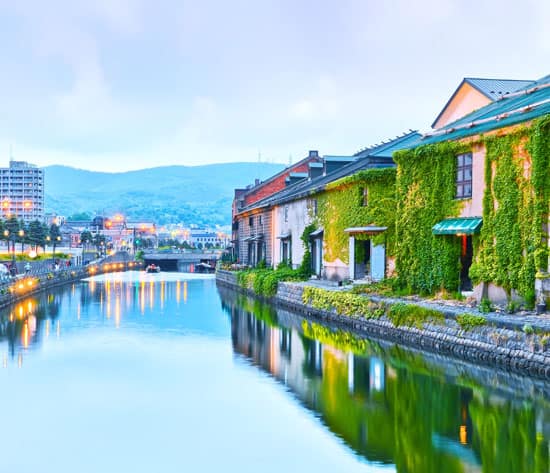
Have a Question?
You might see your comment appear on this page, but your email address and full name will not be published. Your personal information will remain confidential. Our Asia travel experts will get back to you as soon as possible. Required fields are marked *